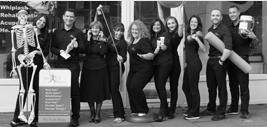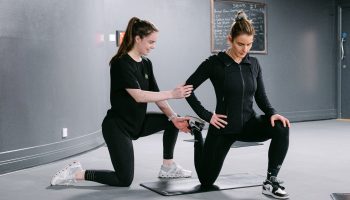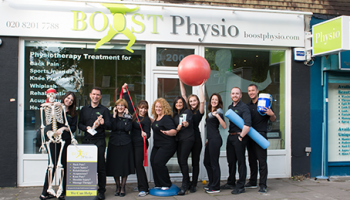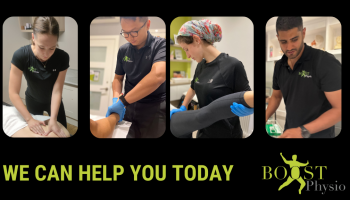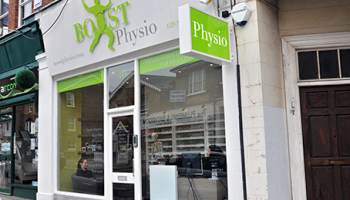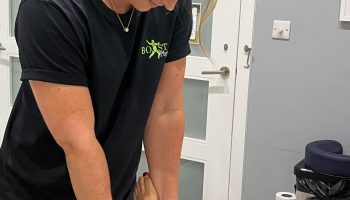Wrist and Hand pain? Read our interview with Hand Surgeon Mr Elliot Sorene
Hand injuries and issues can be very serious as our hands are key to almost every task that we do. Consultant Q & A this month focuses on hand related issues. Senior BOOST PHYSIO Laura Harman interviews leading Hand and Upper Limb Surgeon, Mr Elliot Sorene, and asks him 4 topical questions about hand related issues.
Mr Sorene was selected and included as the only super-specialised hand, wrist and elbow surgeon in the 2013 guide to Britain’s 250 best doctors. Mr Sorene was featured in the Tatler 2013 is a Consultant Hand and Orthopaedic Surgeon at UCH Hospital and his private practice is based at The Hospital of St John and St Elizabeth. View Mr Sorene’s website here.
BOOST PHYSIO: You were recently voted the top UK hand surgeon in Tatler’s Doctors guide 2013. You must have seen some interesting cases during your career. Can you tell us of one that stands out for you?
Mr Sorene: Being voted top UK hand and wrist surgeon in Tatler for 2013 was certainly an honour. I do get a lot of interesting cases and interesting patients. Many of my patients are celebrities, professional sports players, musicians and one of the things I find most amazing about my profession, hand, wrist and upper limb surgery, is that I do have a very varied amount of very interesting cases. I treat children with congenital deformities, I undertake joint replacements, keyhole arthroscopic surgery, nerve surgery, tendon surgery and fracture surgery.
I must say that in every clinic and on every operating list, there are very interesting cases. Recently I have returned from charity work in India and undertook a great deal of tendon transfer surgery for deformities of the hand and the upper extremity in a village in India. This was fascinating, I particularly enjoy challenging surgeries, such as wrist replacement surgery, and reconstruction of severely injured hands or wrists, or hands and wrists deformed by arthritis.
During my career, I have also treated many bomb blast trauma victims, which is also challenging. However, if you want one case which particularly stands out for me, this would be the case of a dental student who had a stroke and was left severely paralysed and for a number of years she has been wheelchair bound and unable to use her hands. I undertook tendon transfer surgery and contracture releases in her hand, wrists, elbows and shoulders which has enabled her to use her hands. In spite of the fact she is unable to speak, seeing the tears in her eyes when I first saw her in clinic once she was out of the splints, tears of happiness when she could see her fingers moving, and her hand functioning I shall never forget this.
BOOST PHYSIO: Trigger finger is a common and frustrating condition. What can you do to help it?
Mr Sorene: Trigger finger and trigger thumb are very common conditions. Traditionally it is associated with diabetes, repetitive overuse of the hand, such as in golf or tennis players. However, I am seeing more and more cases even in much younger patients, associated with obsessive texting, what used to be called Blackberry thumb. If this is early on in the condition, activity modification, non-steroidal anti-inflammatory medications can resolve this. However, once real triggering and locked fingers or thumbs occur, and the patient is waking up in the morning with fingers stuck mechanically and has to click the fingers or the thumb to get them out of the hand, then this is a problem.
Steroid injection can solve the problem, however, if in spite of activity modification and a steroid injection the patient still has triggering and the fingers are locking, then surgically this can be released with the small procedure, which can be undertaken under local anaesthesia, general anaesthesia or under local anaesthesia with a small amount of sedation. It involves a small wound in the hand and the fingers can be used pretty much immediately after the operation. It is a very successful procedure.
BOOST PHYSIO: Many patients are offered injections for tennis elbow. What is the difference between a corticosteroid injection and platelet-rich plasma injection?
Mr Sorene: Tennis elbow is an extremely common condition and it has many ways of treating it. Ideally activity modification, rest and physiotherapy should be the main treatment. However, there are patients who do have considerable lateral elbow pain or lateral epicondylitis, which is a tendinosis and breakdown of part of the tendon in the outside of the elbow.
This has been treated with dry needling, steroids, Botox and lately, platelet rich plasma injection has become more popular. There is some evidence in the literature, that platelet-rich plasma injection is at least as successful as steroid, if not more successful. Platelet rich plasma injection is taking the patient’s blood and using a centrifuge one can retrieve the clotting factors, platelets and the plasma from the blood, which contains platelets and a great deal of healing factors which if injected under ultrasound guidance into the area of the disruption of the tendon, this can encourage healing. This is seen as being a very successful way of treating tennis elbow. Patient can have up to 3 injections, normally at least 2 weeks apart and on ultrasound, the disruption within the tendon can be seen to heal as the patient’s condition improves.
BOOST PHYSIO: You have started to use Xiapex as a non-surgical treatment for Dupuytren’s contractures? Can you tell us how it works?
Mr Sorene: Xiapex is an injection, which is a collagenase enzyme that selectively eats away the Dupuytren’s tissue within the hand and releases contractures. Treatment for Dupuytren’s disease traditionally involved extensive surgery with many months to recover from. Now I undertake this injection of Xiapex, and the next day I undertake a manipulation under local anaesthesia. All this is done in the clinic, avoiding lengthy surgery and rehabilitation, and the results are fantastic. Instead of months of recovery after surgery, these is days or weeks after the Xiapex, and the results are excellent.
BOOST PHYSIO has 2 High Street private Physiotherapy clinics in Hendon NW4 and East Finchley N2. We provide physiotherapy rehabilitation and treatment for all types of hand and wrist injuries and issues.
www.boostphysio.com
Tel: 020 82017788


Mon-Thurs 8am-9pm
Fri 8am-3pm
Sat/Sun 9am-6pm

BOOST PHYSIO works with major insurance companies like: BUPA, AVIVA, WPA, CIGNA and Simplyhealth. We usually deal directly with your insurance company.





